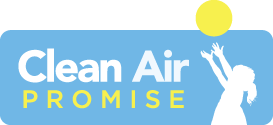AARP Hearing Center
Breathing Clean Air Is Not An Option...For Any Of Us
By Pam Evans, February 14, 2012 11:09 AM

It's early February in DC, yet when I headed out my front door the last two mornings, I was greeted not by grey, gloomy weather, but by perfectly gorgeous, crystal clear blue skies! The sunshine through my car windows made it so cozy I had to turn down my heater, even though the outside temp was in the 30's! How glorious to enjoy a beautiful clear blue sky and breathe in healthy fresh air. All Americans should be able to breathe clean air, yet according to the American Lung Association, nearly half of all Americans - 48 percent - still live in areas with unhealthy levels of smog pollution. And those unhealthy levels lead to more asthma and upper respiratory attacks by both children and adults, including the elderly. Exposure to smog pollution can exacerbate respiratory illness and even cause premature death.
I think my appreciation for clear blue skies is due in part because I was raised in one of the smoggiest areas in America; Riverside-San Bernardino California. In fact, it ranked #1 in unhealthy air according to a 2011 report by Environment America . That area, home to more than 3 million residents, had unhealthy air on one out of three days in 2010. I can only imagine how bad it was in the early '70's, when we would come home from swim team barely able to take a deep breath without coughing. (Baltimore, MD; Washington, DC-MD-VA-WV; Philadelphia, PA-NJ; Houston, TX; and Atlanta, GA made up the rest of the top smoggiest metropolitan areas list for 2010.)
I'm not sure why we're still willing to sacrifice our health for jobs, when it's actually a win-win situation. Independent analysis by the White House Office of Management and Budget concluded that the Clean Air Act (CAA) saved Americans between $121 billion to $193 billion, while costing just $23 billion to $27 billion, between 1992 and 2002, a financial return of 500 to 700%. The environmental technology industry-spurred by environmental regulations and particularly the Clean Air Act-created 1.3 million total jobs between 1977 and 1991. Exports of environmental and pollution control technologies grew by 130 percent between 1993 and 2003, and were valued at $30 billion in 2004.
If you're still not sure if the EPA and clean air advocates are really making a difference, take a look at the Clean Air Promise website and watch some of the stories of people whose quality of lives are significantly affected by the quality of the air they breathe.
Do you have a story or a friend, grandchild or loved one (or yourself) whose health is put at risk by air pollution? Let us hear about it.































































